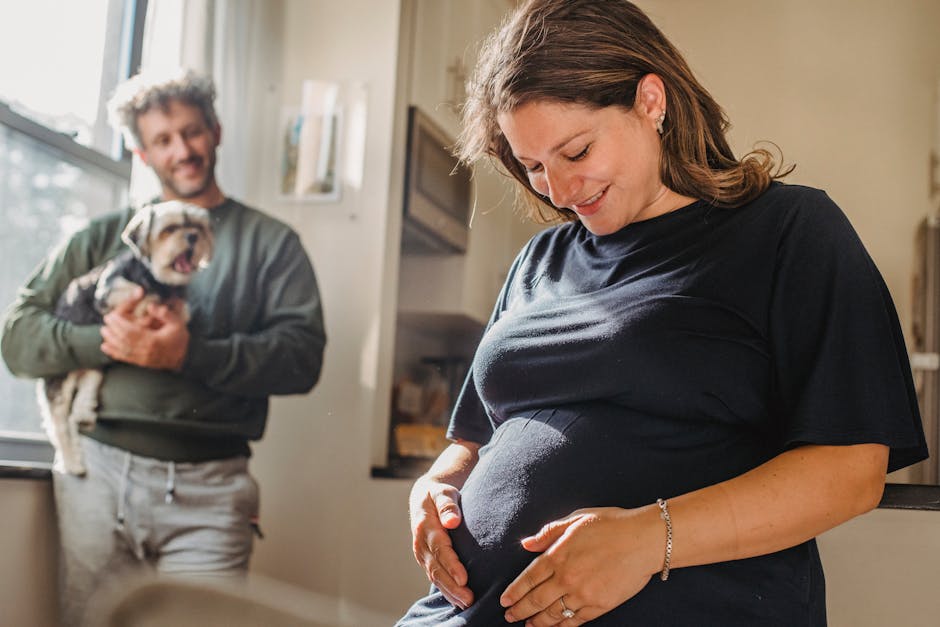How Much Is A Pregnant Dog X-ray
Many people are concerned about how much an x-ray of their dog during pregnancy is, well, expensive. They may even question if it’s worth the money since most dogs are not pregnant at this time.
Fortunately, there are ways to determine whether or not your puppy needs an x-ray before they become parents! There are many free resources that can help you identify if your pooch requires an x-ray, and then what kind they should get.
It is very important for puppies to be screened for health issues as early as possible. Some conditions cannot be treated until the child is older, so ensuring their healthy development has top priority.
This article will go into detail on some helpful tips for determining if your canine companion needs an x-ray prior to breeding/birth. It also covers different types of radiographs, what each one does, and when each one is needed.
There are many ways to tell if your dog is pregnant

The most obvious way to know if your dog is pregnant is by looking at her belly. If you notice that her waistline has thickened, her fur is thicker and longer, or she is visibly growing in size, then it’s likely that she’s pregnant!
Thicker skin is also an indicator that your dog may be expecting puppies soon, so watch for those changes!
But while having a noticeable bulge under your dogs clothes can be fun to see, this extra padding can sometimes make it hard to identify which areas of the body are really important. For example, if you look closer at the neck, you may find soft tissue instead of bone. A non-pregnancy related condition could cause that as well!
So how do you determine whether or not your dog is truly preggers?
Well, there are some tests that your veterinarian might perform to confirm pregnancy. Some things such as ultrasound scans have become very common, but other more invasive tests like blood work and xrays still exist.
Your dog may show signs of pregnancy, or there may be no signs at all
Many dogs will display some changes during their pregnancies, such as weight gain, sniffing and licking behavior towards other animals, and puppies being born.
Other things you can watch for include swollen paws (from pregnancy-related fluid buildup) and females that appear to have dropped one side of their face due to fetal position.
If your dog shows any of these symptoms, take them to the veterinarian right away!
Your doctor will perform a physical exam, ask questions about your dog’s behaviors, and look into whether your dog is eating enough and moving around appropriate amounts. They might also do blood work or an ultrasound to check for pregnancy signs.
Your vet will perform a pregnancy test

A urine sample is gathered to check for hormone levels. If the hormonal level is high, then the dog is pregnant!
This can be done either with a blood or urine test. The doctor may also do an ultrasound to make sure there are fetal membranes as well as determine gender.
Some dogs are genetically predisposed to give birth so it is not always possible to tell if your pet is ready to breed by looking at her body. It takes some time after conception for a dog to know that she is ready to bear puppies!
Many owners of pregnant dogs find this information helpful as they start to prepare for their new furry family members. Some go about buying toys and beds, while others research how much money they will spend on food and medicine during this stage of the dog’s life.
There are many things that can affect the hormones in a dog’s system when she is trying to conceive, so it is important to have a good health plan before she tries to get pregnant.
There are many reasons your dog may need an x-ray

Many health conditions can be determined by looking at an x-ray, so it is important to do diagnostic tests when needed.
X-rays use radiation, which comes from atoms that break down and become other things like oxygen and food for bacteria. Radiation exposure is very harmful as it can increase cancer risk in people.
It has been shown that children exposed to higher levels of radiation during development have more chances of getting some types of childhood cancers, such as leukemia and brain/central nervous system (CNS) tumors.
As dogs age, they also develop bone and cartilage, which are similar to human tissue. Therefore, just like humans, dogs can suffer damage due to excessive radation exposure.
There are precautions you can take to limit exposures, but only if you know what they are! Never turn off or cover up an x-ray machine, this could cause overexposure.
Your dog may need an x-ray to check for abnormalities

It is very important that your puppy does not get exposed to any infectious agents or diseases during this process. If your dog needs an x-ray for health, there are several different costs depending on the type of animal, how old they are, and whether it is an inpatient or outpatient visit.
Some things to consider are if your pet has dental problems then xrays of their mouth will also be needed, as well as scans to look at other parts of their body like their lungs, heart, spine, or stomach.
The cost of these exams varies widely depending on the veterinary clinic and individual doctor’s fees. An average price per scan is around $25 -$50 however some much more expensive clinics do not have minimum prices. There are many ways to find out what services each vet offers so you can compare and determine which one fits best with your budget!
Most vets will ask about medical history questions before doing an exam or test, so make sure to discuss anything related to symptoms you were given earlier.
There are many different types of x-rays
Most veterinary hospitals perform at least an AP view (abdominal) x-ray during pregnancy. This is usually around week 4 or 5, when most dogs are diagnosed with initial pregnancies. These exams determine if your dog has implants, a uterus, or no embryos present.
Some vets also order a dorsoventral (DV) x-ray where they look directly down the chest to see if there are any calcified tissues resembling ribs. Only about half of pregnant bitches get this done because it isn’t very helpful in determining fetal survival, but it can help identify whether the dog has ovaries!
The most important thing about these tests is that they don’t carry any risk for the fetus, so make sure you check out all the research before ordering one. Your vet should be able to tell you how long each test will take as well.
Some x-rays are not safe for your dog

Certain types of x-rays should be avoided when you’re looking to find out if your dog is pregnant. These include kennel panoramic radiographs, ct scans, small animal cone beam computed tomography (CBCT) scans, and high resolution micro CT or CAT scan images.
Most veterinary hospitals will perform at least one of these tests during pregnancy. For example, they may use kennel panorama radiographs as a baseline image before performing a CBCT scan to get more detailed information about internal organs such as bones, lungs, heart, and stomachs.
These very in depth scans can cost several hundred dollars depending on the size of the dog being scanned. Unfortunately, most dogs who need this test have to pay out of pocket due to budget constraints. It is important to do your research and make sure this test is necessary for your puppy!
If you notice any changes in your dog’s behavior like aggression towards other animals or people, don’t book that expensive test unless it is truly needed.
It is also important to note that some puppies are exposed to radiation throughout their life even after they reach adulthood. Because exposure to radiation early in development can cause long term health problems, doing an x ray on an adult dog isn’t necessarily advised either.
Some x-rays are not useful for pregnancy detection

Only certain types of radiographs (x-rays) can be used to determine if your dog is pregnant. These include: intraoral, or mouth x-rays; ear x-rays; skull x-rays; abdominal x-rays; and pelvis/genital x-rays.
You will need to schedule these tests at a veterinary clinic that performs them on dogs. The cost depends on the type of test you want done as well as the size of the animal being tested. Unfortunately, some of these tests cannot be conducted during pregnancy.
A fecal occult blood test (FOBT), also referred to as a stool guaiac card or faecal dipstick test, does not require an x-ray but instead uses a sample of feces to detect red blood cells. If there are none, then the dog is probably not pregnant. This test has a very low sensitivity so it may take longer than needed before a positive result is found.
Sensitive enough to see fetal tissue in early stages of development however, this test cannot tell whether the red blood cells belong to the unborn puppy or older red blood cells from the mother. A more advanced FOBT called immunoassay detects both maternal and embryonic erythrocytes making it much more accurate, but expensive and time consuming to use.
As mentioned earlier, most clinics will have you do a FOBT first to check for gastrointestinal bleeding.

